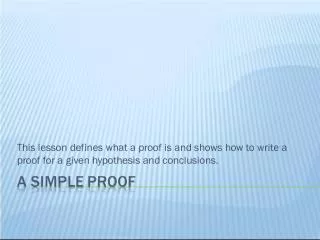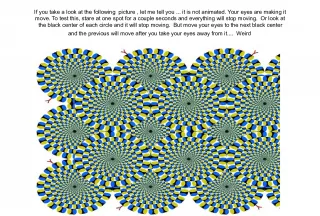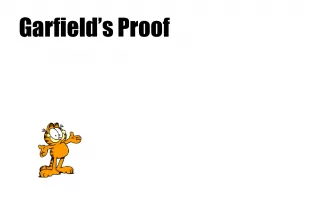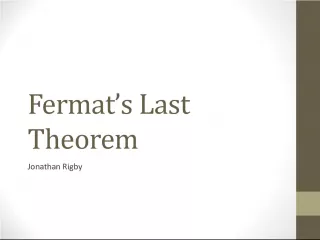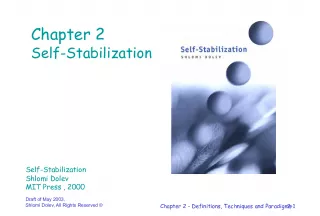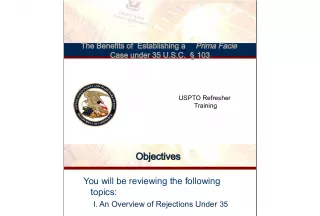Paradox: The Illusion of Falsidical Proof
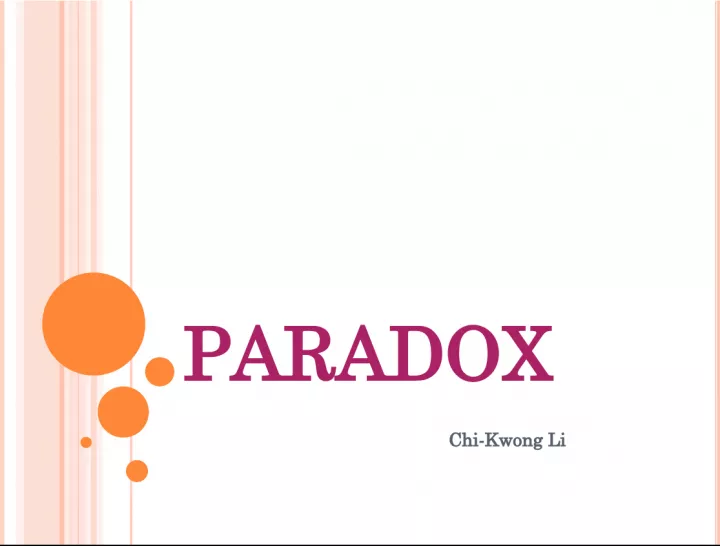

Chi Kwong Li's visual paradox exposes the allure of false proof, demonstrating that what appears to be right can turn out to be wrong.
- Uploaded on | 0 Views
-
 arthurdenys
arthurdenys
About Paradox: The Illusion of Falsidical Proof
PowerPoint presentation about 'Paradox: The Illusion of Falsidical Proof'. This presentation describes the topic on Chi Kwong Li's visual paradox exposes the allure of false proof, demonstrating that what appears to be right can turn out to be wrong.. The key topics included in this slideshow are . Download this presentation absolutely free.
Presentation Transcript
1. PARADOX Chi-Kwong Li
2. A ‘ VISUAL ’ PARADOX : I LLUSION
3. F ALSIDICAL PARADOX A proof that seems right, but actually it is wrong! Due to: Invalid mathematical proof logical demonstrations of absurdities
4. E XAMPLE 1: 1=0 (?!) Let x=0 x(x-1)=0 x-1=0 x=1 1=0
5. EXAMPLE 2: THE MISSING SQUARE (?!)
7. Mathematical Induction The principle of mathematical induction: For a statement involving positive integer n. a) check that the statement is true for n = 1. b) check that if the statement is true for n = k, it will ensure that n = k+1 is true. Then the statement is true for all positive integer n. Suppose there are n balls in a box such that. If you are ensured that you pick a ball from the box with a certain color, then the next ball must be of the same color. The first ball you pick is a red ball. Then ……
8. If there are n (> 0) people in the this room, then they are of the same gender. A WRONG INDUCTION PROOF 3
9. Proof by Induction If there is one person only, then the statement is true. We show that if k people in this room have the same gender, then k+1 people in this room will have the same gender. Proof. For k+1 people, ask one person to leave the room. Then the k remaining people have the same gender. Now, ask the outside person to come back, and ask another person to leave the room. Then again the k remaining people have the same gender. So, …..
10. B UT WE KNOW , NOT ALL PEOPLE IN THIS ROOM HAVE THE SAME G ENDER ! What is wrong?
11. BARBER PARADOX (BERTRAND RUSSELL, 1901) Once upon a time... There is a town... - no communication with the rest of the world - only 1 barber - 2 kinds of town villagers: - Type A: people who shave themselves - Type B: people who do not shave themselves - The barber has a rule: He shaves Type B people only.
12. QUESTION: WILL HE SHAVE HIMSELF? Yes. He will! No. He won't! Which type of people does he belong to?
13. ANTINOMY p -> p' and p' -> p p if and only if not p Logical Paradox More examples: (1) Liar Paradox "This sentence is false." Can you state one more example for that paradox? (2) Grelling-Nelson Paradox "Is the word 'heterological' heterological?" heterological(adj.) = not describing itself (3) Russell's Paradox: next slide....
14. RUSSELL'S PARADOX Discovered by Bertrand Russell at 1901 Found contradiction on Naive Set Theory If we define all mathematical entities as sets, and assume that there is a universal set U containing every sets. Problem. Define a set R to be the elements in U such that x is not an element x. Question: Is R an element of R?
15. B IRTHDAY P ARADOX How many people in a room, that the probability of at least two of them have the same birthday, is more than 50%? Assumption: 1. No one born on Feb 29 2. No Twins 3. Birthdays are distributed evenly. Formula: ???
16. 3 T YPES OF P ARADOX Veridical Paradox : contradict with our intuition but is perfectly logical Falsidical paradox: seems true but actually is false due to a fallacy in the demonstration. Antinomy: be self-contradictive
17. A DDITIONAL PARADOX Surprise test paradox The instructor says that he will give a surprise test in one of the lectures. Then …. Zeno’s paradox ( Zeno of Elea , 490–430 BC) In a race, the quickest runner can never overtake the slowest, since the pursuer must first reach the point whence the pursued started, so that the slower must always hold a lead.
18. HOMEWORK 1. People from H village always tell the truth; people from L village always lie. If you have to decide to go left or go right to visit the H village, and seeing a person at the intersection who may be from H village or L village. What question should you ask the person to ensure that you will be told the right direction to the H village. 2. Consider the following proof of 2 = 1 Let a = b a 2 = ab a 2 – b 2 = ab – ab 2 (a-b)(a+b) = b(a-b) a + b = b b + b = b 2b = b 2 = 1 Which type of paradox is this? Which part of the proof is wrong?
